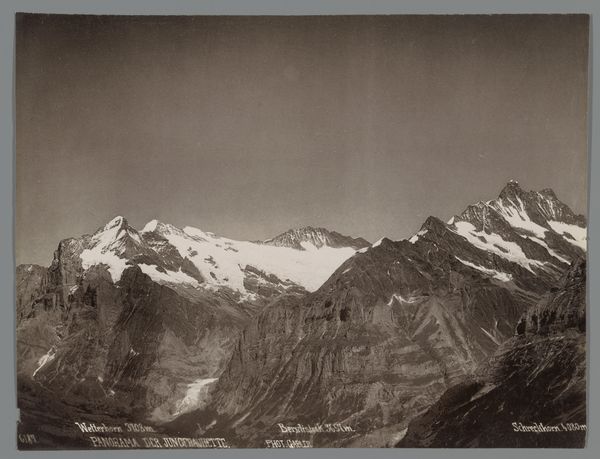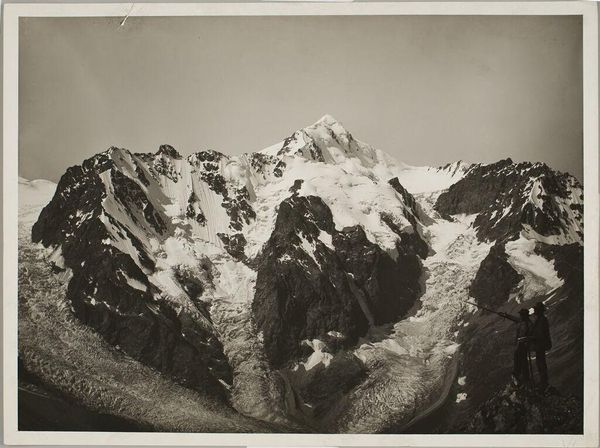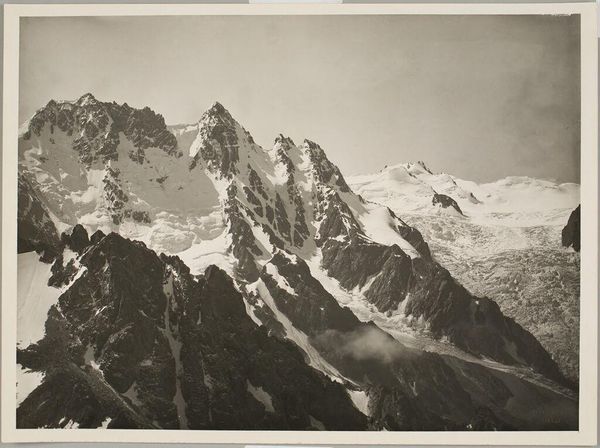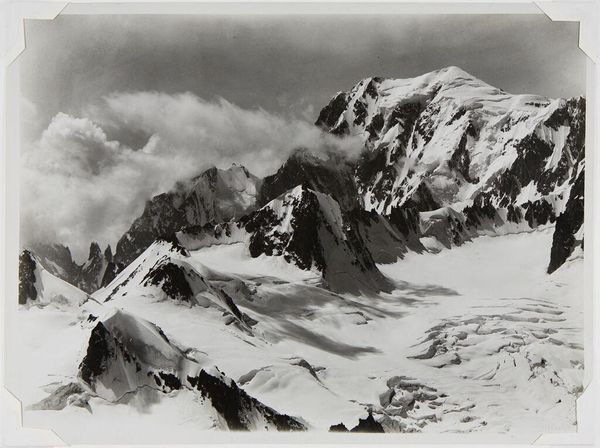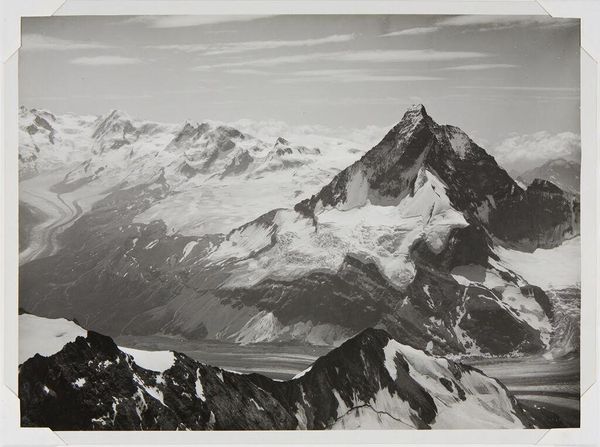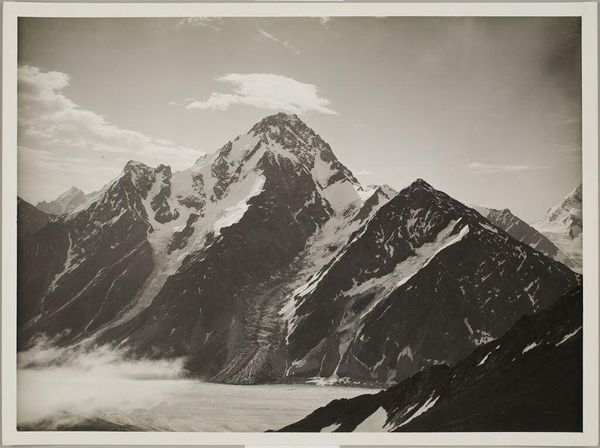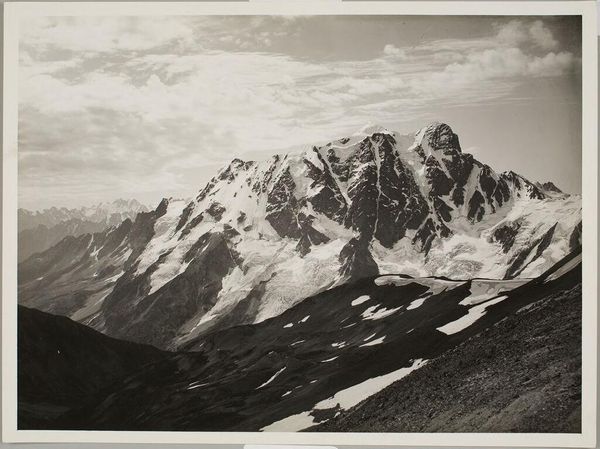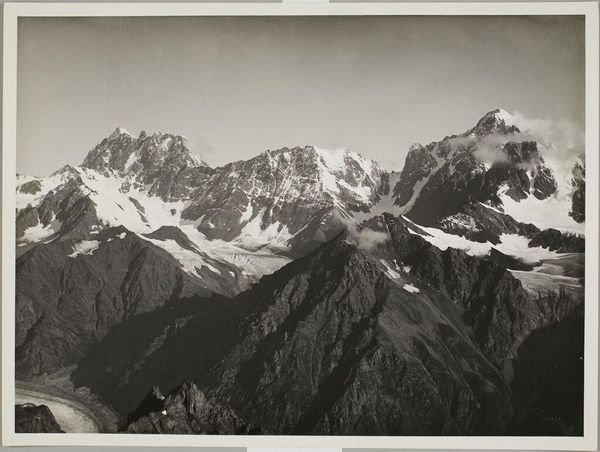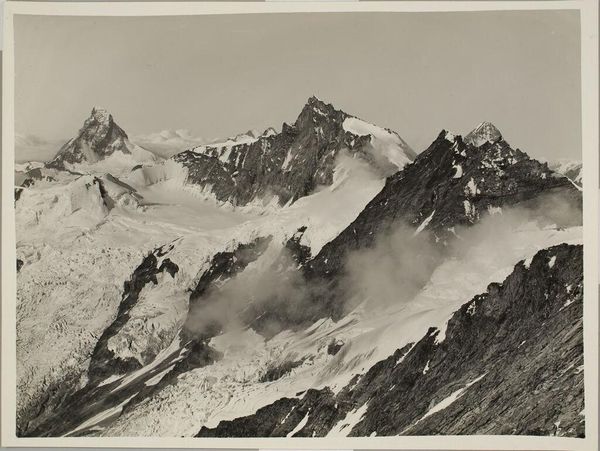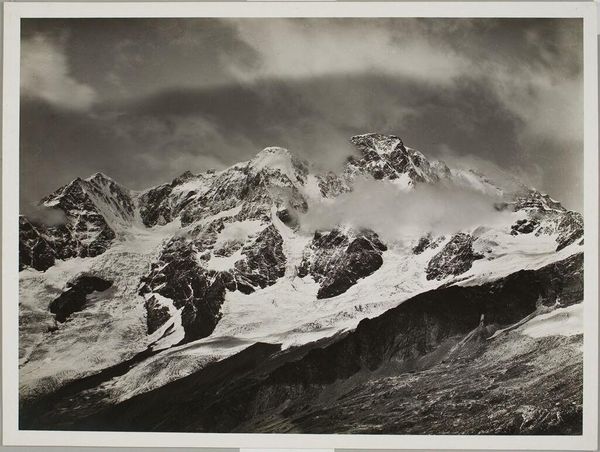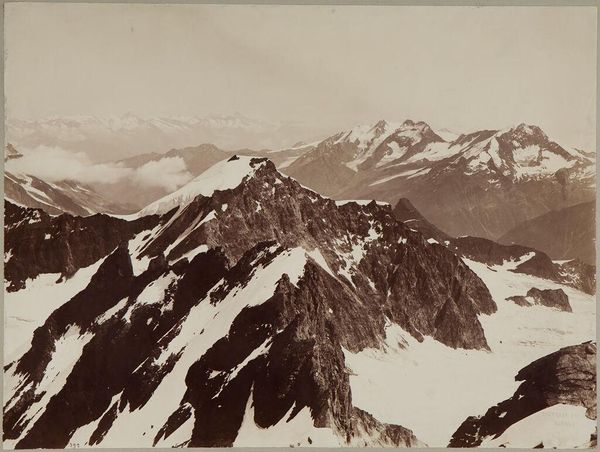
Dimensions: 15.9 × 21.5 cm (image/paper/first mount); 27.5 × 34.9 cm (second mount)
Copyright: Public Domain
Curator: Before us hangs "Mid Snow and Ice," a gelatin-silver print by Alfred Stieglitz. It's estimated to have been created sometime between 1894 and 1939, and currently resides here at the Art Institute of Chicago. Editor: Stark. That's the immediate impression I get. Stark, but also somehow incredibly soft. The way the light catches the peaks and the textured sky…it’s both imposing and ethereal. Curator: It’s a potent image, absolutely. Looking at it through a lens of social history, we see Stieglitz positioning himself in dialogue with the prevailing pictorialist aesthetic. His concern was how photography could function as high art, not mere documentation, which carried a lot of gendered connotations. Think about the hierarchies of craft versus fine art, the amateur versus the professional... Editor: Absolutely, and let’s think about the actual craft involved in this seemingly "simple" landscape. It's a gelatin-silver print, meaning Stieglitz wasn't just pointing and shooting. The process of creating these prints demanded darkroom manipulation, skilled chemical development. He’s carefully shaping the tonal values. Curator: Exactly! And the composition isn’t accidental either. The mountain range cuts a dramatic diagonal, disrupting any sense of idyllic serenity. Given the socio-political climate of the era, particularly leading up to and during the World Wars, one could read this as a representation of the sublime power of nature, yes, but also of the human condition facing forces beyond control. Editor: I like that you’re connecting that anxiety to material. The mountains are a product of tectonic force, geological time scales entirely divorced from the human experience. And Stieglitz uses the very tangible process of photographic manipulation to evoke that feeling. He doesn't just passively record nature; he actively engages with it, bending the medium to his will to show an objective truth. Curator: It certainly disrupts typical landscape tropes. Looking closely at the mottled sky, it almost seems abstract, questioning representation itself. Is this sky a literal representation, or an exploration of form? Editor: It speaks volumes about the artistic labor—the hands-on transformation of materials, chemicals, paper, light—into a final form we can consume and contemplate. Stieglitz reminds us of that material journey. Curator: I appreciate how this work invites such rich discussion, even today. Editor: Agreed. It grounds grand, often abstract, artistic notions in very material realities.
Comments
No comments
Be the first to comment and join the conversation on the ultimate creative platform.
